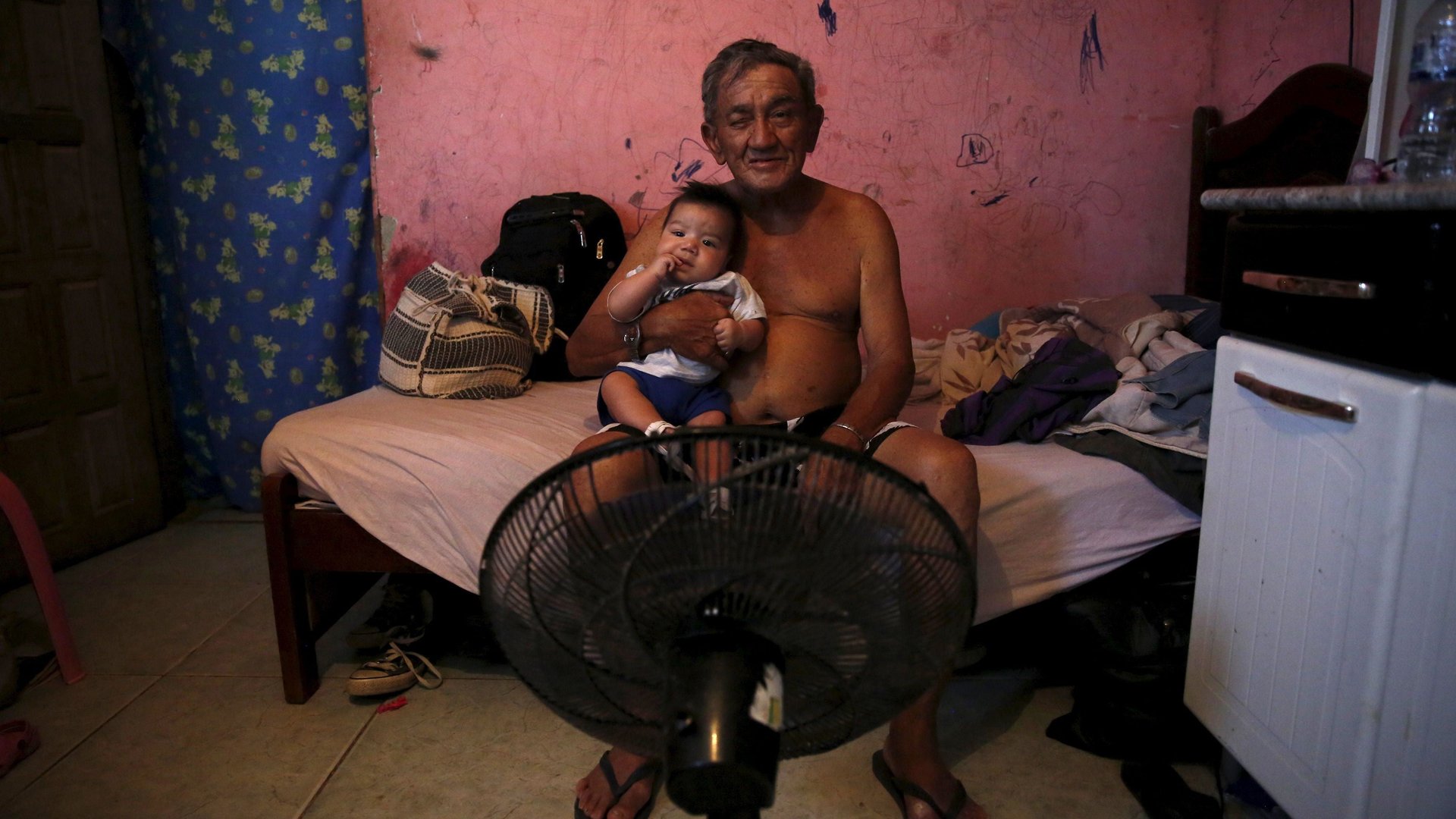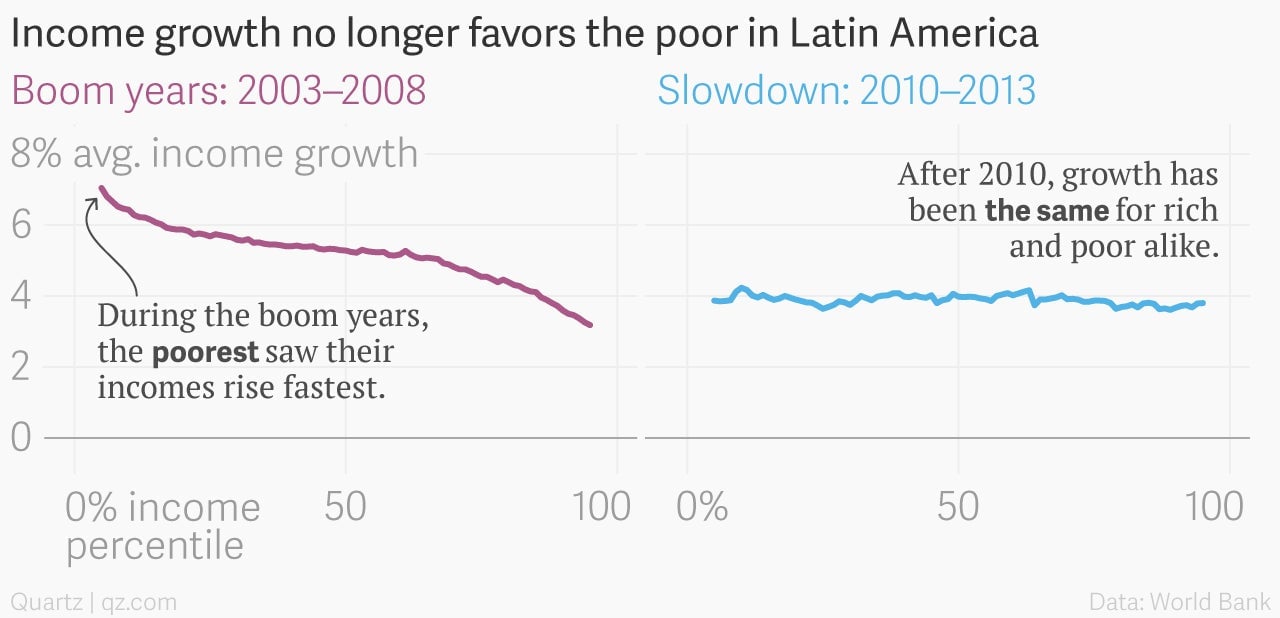Two stark charts show why Latin America’s hopes of ending poverty have been dashed
For a while in the 2000s, it looked like Latin America was well on the way to closing its yawning income gap, one of the widest in the world.


For a while in the 2000s, it looked like Latin America was well on the way to closing its yawning income gap, one of the widest in the world.
A commodity boom fueled by China’s vertiginous growth lifted wages in the region, particularly for the poorest Latin Americans. Between 2003 and 2008, their income grew by 7%, more than twice the growth rate for the richest, the World Bank notes. The poverty rate fell by 7.7% (pdf, p. 16) during that period, according to a report. Inequality, as measured by the Gini coefficient, sank by nearly 9% between 2000 and 2010 (pdf, p. 7), the biggest drop among the world’s regions, according to the Commitment to Equity Institute.
But as the global economy has slowed again, it’s also the poorest in Latin America who have felt it the most. Since 2010, that group’s rate of income growth has decreased by almost half, to 3.9%. Meanwhile, the richest have seen their income grow faster, by 3.8% compared to 3.2% in the 2003-2008 period.

With income for the poor and the rich expanding at virtually the same rate, there is little hope of reducing inequality without major government intervention. That’s because the decrease in poverty in Latin America in past years was driven by the faster wage growth among the poor, not by policies to redistribute income, according to the same World Bank report.
There are already signs that the economic slowdown is eroding some of those victories against poverty. The UN’s Economic Commission for Latin America and the Caribbean estimated, in a report last month (pdf, p. 18, in Spanish), that the share of Latin Americans in extreme poverty grew to 12% of the region’s population in 2014, compared with 11.7% in 2013 and 11.3% the previous year.